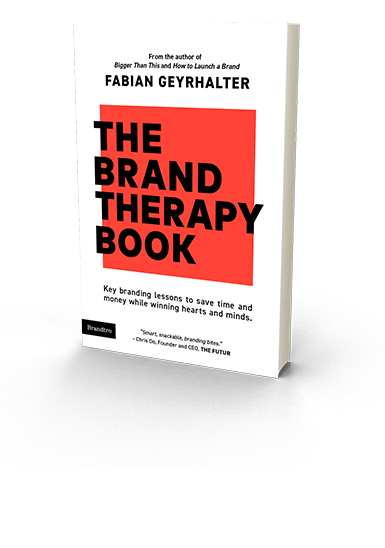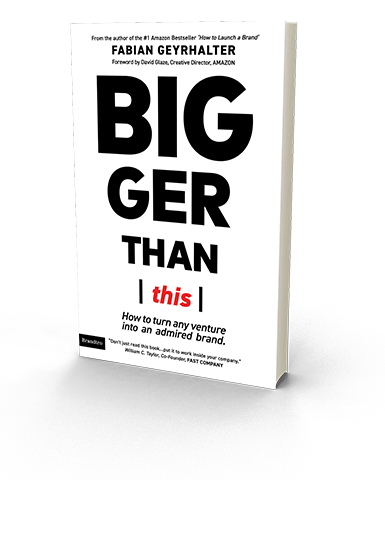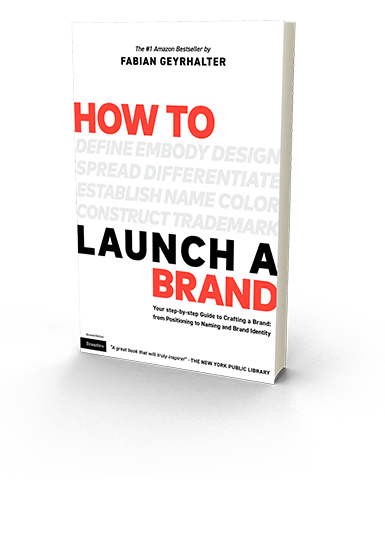Blog Archives
When Something Isn’t Broke, Fix It: Restarting Your Brand At Its Height
This article was originally published on Forbes on 10/20/16.
Do you know that feeling when you are so inspired by something that you’re left speechless, puzzled and somewhat confused? Perhaps you’ve experienced it from a natural wonder, an incredible speech, a mind-blowing innovation you read about, or simply something your newborn does. Well, I had that moment while watching Netflix.
I know that sounds peculiar, but when I watched the first episode of Netflix’s second season of “Chef’s Table,” the show that dives deep into a specific renowned chef’s way of thinking, it took me a day or so to sort everything I learned into nuggets of insight. The episode starred American superstar chef Grant Achatz. But it wasn’t the balloon cheese dessert, the fact that he overcame cancer (stage 4 squamous cell carcinoma of the mouth) and was known for years as “the chef who couldn’t taste,” or his quest to reinvent meals daily that inspired me. It was his relentless creative drive that left me speechless.
His quest to transform something (food, in his case) into an emotional experience is remarkable; this is also why I do what I do at my brand consultancy. When I work with startup entrepreneurs on deriving their new venture’s philosophy and shaping their brand’s strategy, voice and image, triggering emotions is key to this journey – and to my own overall personal happiness.
The fact that Achatz would have considered his first restaurant a failure unless it would quickly turn into one of the very best in the country (it achieved that goal, being named the second best in the U.S.) was insane – insane in an inspiring way. What really struck me though was the fact that at the height of his restaurant’s success, he decided to close it and reinvent it from the ground up with new interiors and a completely new menu. For a three-star Michelin restaurant, that is as risky of a business move as there is. Digesting this indisputably progressive way of thinking, and translating it to other brands, got me excited.

Who else would a brand reinvention this sudden and complete apply to? And why? To find out, I pose a few questions that will help guide you down the path of boldly diving into ice cold branding waters, in case that disruption applies to your business.
1. What Is Your Brand’s DNA?
Knowing what your brand stands for, its single most important objective, and the values that are at the core of it are the most crucial ingredients of branding, ones that I spend ample time crafting with my clients. If that DNA of your brand ends up being best described by the word “innovation,” you are intrinsically forced to implement that thinking across the board.
If that drive for change and reinvention also drives you as the founder, you can not sit back and put success on autopilot. You must constantly go back and rethink, “How would you do this from scratch today?” If the house were to burn down today, figuratively speaking, how would you piece it back together? Likely, you would not literally piece it back together. Instead, you would rethink its purpose, location and foundation from the ground up and opportunities would pile up in front of you.
2. What Is Hiding Behind The Outward-Facing Success Of Your Brand?
No one is perfect and no brand is purely a glimmering success. You know it and I know it: There’s baggage hidden in the drawers of every operation.
Creating a list of even the smallest things that require fixing may soon turn into a notebook full of ideas and opportunities. These may turn a call for complete reinvention into an outcry for action; action to turn into the best your brand could possibly be. If you hear that inner call, you can’t forget it.
3. Is Another Brand Too Close For Comfort?
Are there startups that are knocking on your industry’s door? Competitors that are racing to take your place? The likelihood of this answer being “yes” is high, but I encounter two types of entrepreneurs: The ones who proactively act upon that knock on the door and the ones who push forward, resting on their share of the market.
In Achatz’s case, the knock came from another Chicago restaurant that just earned a three-star Michelin rating, giving him a local head-to-head competitor for the very first time. That was enough to make him act upon it.
When you see the first signs of competitors racing to take your place, it may be best to completely switch course. That is, “when everybody zigs, zag,” as author Marty Neumeier advises companies do in order to outsmart their competitors by taking a bold move to differentiate.
4. Do You Wake Up With The “Now What” Syndrome?
Many successful founders secretly wish they would not have been quite as successful with their first venture, as they sometimes feel trapped by the success they have created. They build their company into a comfortable and successful venture, then they don’t see a way out while they have many other entrepreneurial passions and ideas. Hiring another CEO feels daunting.
Most of the time it is solely the founders who are imposing that limitation on themselves. If you are one of them and you have many thoughts that would answer the question “now what?” a brand revamp might not only outsmart your competitors, surprise and delight your customers, but also reinvigorate your own life. That is something that should be on top of your list at all times.
Congratulations on your brand’s success – now please start over.
Crazy? Perhaps.
A genius move for the right type of entrepreneur and brand? Most definitely.
Joining Jay Baer’s Convince & Convert Influence Pros Podcast
We discuss why it’s key to know your core values before hiring an influencer and how to come up with actionable values.
CATEGORIES:
Public Relations And Brand Overlap Far More Than You Think
This article was written by Rebekah Iliff and was originally published by Forbes on 09/01/16.
In below article, Rebekah Iliff, Chief Strategy Officer at AirPR, discusses the intersection of branding and PR; an intersection too obvious to ignore, yet one that remains ignored too often. With her permission, and as my book is being referenced throughout (well, thank you!), I now like to share her thoughts with the readers of The New Brand Post. It goes something like this:
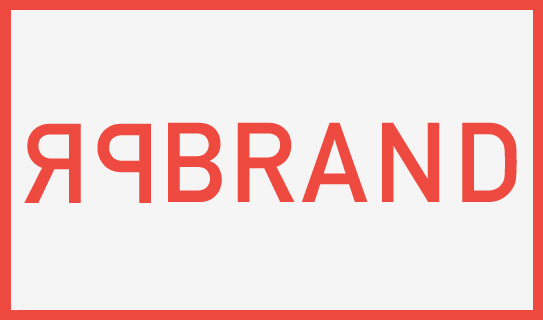
Without intending to, a company’s departments sometimes end up working in ineffective silos. A tech team without communications professionals can’t shed light on their achievements uber-effectively. An innovative ASMR advertising campaign can’t get many kudos without public relations, and the news of a rebrand can’t spread as fast organically as it can with media outreach. Stitching together cross-functional teams leads to greater innovation and opportunity.
At the same time, there’s a bit of a stigma about bringing too many cooks into the kitchen. Does your art director really need to help approve the imagery you’re sending to a journalist? Does your public relations department really need to know if the copy team is writing a spur-of-the-moment April Fool’s Day display ad before it goes live? In both situations, the answer is yes.
It may take longer to loop in other teams, but it’s worth it. Which brings us to two teams that frequently overlap without many people realizing it: public relations and brand strategy. These teams are often severed from contact, even though it’s paramount that they work together. Together, they are more effective, as both teams deal with messaging, public perception and customer touch points.
Fabian Geyrhalter, Principal and Founder of Los Angeles-based design and branding agency FINIEN, recently released the second edition of How to Launch a Brand, which covers everything from brand positioning and naming to brand identity. He’s launched more than 50 brands – large and small – and knows that brand strategy is more effective when it’s backed by an integrated PR and communications plan. Here are three ways public relations and brand strategy teams are related and why it’s important, according to Geyrhalter, a fellow Forbes Agency Council member.
1. PR and brand teams both focus scrupulously on messaging penetration
While copywriters, often living on branding or creative teams, work to align copy with a brand’s voice guidelines, public relations teams align messaging with a brand’s key ideas. In that sense, branding/creative and PR teams are the two wings holding a company accountable for what it communicates to the public, from board members to customers and journalists.
“Consumers respond to brands that have a coherent and straightforward message,” Geyrhalter writes in his book. “Equally important to your message is selecting a distinctive voice and persona for your company. The audience demands authenticity, and your brand’s voice must be authentic and transparent.”
As an executive at a PR tech company, I see Fitbit as a successful brand that has these teams in coordination. Think about Fitbit’s brand voice: It’s clear, concise, encouraging and motivational. If copywriting contradicts the foundational messaging a PR team is using, misalignment occurs and it can chip away at credibility long term. Imagine if Fitbit sent you a marketing email encouraging you to get a few extra thousand steps in today, while its CEO was quoted in a popular health magazine saying steps don’t matter, only calories. Customers may not notice, but journalists likely would; “misaligned” isn’t a way you want your brand to be perceived.
2. Public perception is jointly owned by public relations and brand
While copywriting and graphic designers and/or UX design control public perception of a brand from a customer standpoint, public relations and communications teams control public perception from the standpoint of investors, board members, influencers (from journalists and analysts to bloggers), and more.
It’s like the two sides of a vanity mirror. On the magnified side, PR people share intricate details with the press who view brands under a microscope. The other side shows a clear, customer-facing view of said brand. Both are needed in order to properly display your “face.”
3. Branding and public relations both pivot upon personas and personalities
Both branding and public relations teams give companies real, human faces through characters and spokespeople, some of whom are real employees, some of whom are figments of our imaginations.
“Characters give the audience someone to root for and follow,” writes Geyrhalter, referencing Mr. Clean, Virgin’s Richard Branson, and Dos Equis’ “Most Interesting Man in the World” as personalities that have garnered impressive followings.
Natural foods brand Kashi is another example Geyrhalter mentions in his book. Kashi has taken a different approach in leveraging its real employees as brand ambassadors, showcasing how its actual team members live and breathe the Kashi lifestyle.
“Thinking of your brand as a person will help you create an authentic voice that will connect with consumers,” writes Geyrhalter. He suggests writing a list of adjectives that describe your brand or writing a faux obituary that includes a list of life accomplishments to better illustrate these personas. How would the brand persona be remembered?
In public relations and communications, real spokespeople – from CEOs who can speak to high-level strategy to CFOs who can talk publicly about financial matters such as an IPO behind a brand are what the public and journalists want (versus boilerplate messaging penned by a PR professional).
Next time you’re poised to launch a PR campaign, perhaps take a moment to ask yourself if the brand is represented fully in every aspect of your company’s outward facing narrative. In other words, are you certain that brand and communications are effectively working together?
Joining Business Rockstars to dive into startup naming
Jump to 1:13 to get 10 minutes of my biggest tips for creating a name for a new company.
CATEGORIES:
How To Launch A Brand: Lose The Ego, Gain A Soul
This interview with Fabian Geyrhalter, Principal of FINIEN, was originally published in The Huffington Post 07/15/16.
Chances are, if you’re a startup or a small business, at some point you’ve asked yourself: “How do I effectively launch my brand?”
While there are quite literally hundreds if not thousands of ways to get the word out these days, the truth is, unless you have a solid foundation from which to launch, your company could very well end up face-down on the pavement. In other words, if your brand lacks the necessary qualities to attract and retain loyal customers you may need to rethink your strategy.
As someone who constantly thinks about these things, I thought it would be fun to sit down with my friend and branding-savant, Fabian Geyrhalter, Founder and Principal of FINIEN. His Los Angeles-based consultancy specializes in turning ventures into booming brands. I’ve had a front row seat to his genius over the last few years, and watched brands he’s advised go from “zero to hero” in a very short period of time. Some have become market leaders, while others have sold to huge companies. Although his branding prowess wasn’t the only factor in these successes, I have no doubt it played an important role.
So whether you’re looking to refresh a brand you dreamt up three years ago or are starting from scratch without a website your business can call home, listen closely to what Fabian G. has to say. Here, I pick his brain on all things branding, positioning, and what you need to be successful in today’s digital world.
P.S. – He recently released the second edition of “How to Launch a Brand”, a step-by-step guide to crafting a brand, from positioning to naming and brand identity. It’s, pretty much, a must-read for anyone developing their own brand (which is basically everyone when you think about it, given how personal branding plays into individual’s professional careers today).
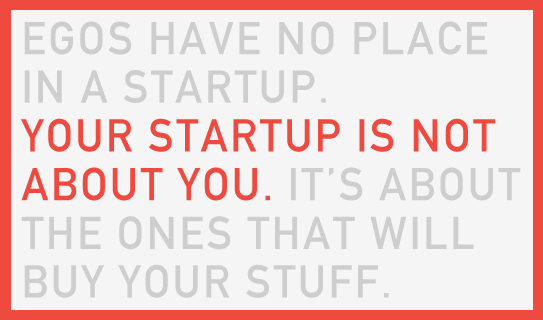
Rebekah Iliff: How many startup brands/companies have you worked with over the last several years?
Fabian Geyrhalter: In the last 3 years perhaps 50, in different capacities. The diversity in the brands we help launch is really what gets me up in the morning and why I dedicate my professional life to doing what I am doing. We helped craft a croatian underwear brand, a workers comp insurance disruptor, a VR brand, a winery, and then of course the expected fair share of apps.
What is most exciting is getting our heads into the minds of these highly diverse consumers and users and diving into the soul of these brands and connecting the two. Most founders are too close to their product, they built a tall wall between themselves and their product and the other side, the one that is so important, the consumer. It is usually mainly psychological – they have not moved an inch from their screens, so they are a bit disconnected from the ones using the product. I talked to a tech startup that worked on a product for moms and their toddlers. I asked them how much time they spent having coffee with moms or playing with toddlers. I received a deer in the headlights stare back. It was awkward; mainly for them.
RI: Why is it important for companies to think of their brands as having a Soul?
FG: A product that competes on price and features alone can never become a brand. A company that has soul does not need to compete on price; ever. Soul is what connects a product or service to a human’s emotion; a soul searches for a soul. We buy Patagonia and TOMS for a reason, and it’s not because of their product.
RI: What other brands do you think have a soul and why?
FG: Yes, there are the Patagonias and TOMS, but there are many startup brands that do it very well also. One I love to cite is Shinola. Born out of necessity and belief, the brand is fueled by authenticity and it found a great voice for itself that directly sparks emotion with their audience. I just spent $280 on a Shinola wallet last week. I did not think once of cross-comparison shopping. It just felt right. It was an all-brand purchase, solely emotional.
When that happens with a very young brand, then you know someone’s done their homework upfront when crafting a brand.
Another example would be Topgolf who realized that if they focus deeply on the target audience they would find the holy grail to generate revenue as a golf startup in a landscape where golf is known to be on the way out, not being able to connect with millennials. Topgolf created spaces to hang out, guys have craft beer and watch the games, ladies can wear high heels and sip cosmos, and everyone can enjoy instagram-happy lighting – and golf is something that happens in the background. They must have looked at bowling and realized that it’s a perfect recipe to get kids to start liking an ‘old’ sport again. It’s about them – and about socializing, in a way that works particularly well for that new audience. That is soul: soul searching in order for souls to connect.
RI: There has been a shift to brands focusing on “Purpose.” What’s the easiest way to incorporate Purpose into your brand, even if you’re a young company?
FG: The easiest way is to look at what your brand stands for, what is the WHY behind your brand: Why does it matter to have this product in this world at this point in time and for the long term and why will your audience deeply care? There is an intersection that will point towards a social cause that can be utilized in an authentic way to manifest that the purpose of the product/service goes deeper than generating sales. That is the easiest way since you asked for that; one that over the past 5 years has become somewhat of a staple for startups founded by millennials as ‘purpose’ is already ingrained in their thinking: “We don’t work for money alone, money is a necessity but not the reason why we are going into the workforce.” Multiply that by ten when they start a business on their own where the sky’s the limit, and the true north is up to their imagination.
In times of great political fear and danger, this generation of entrepreneurs is a shining star on the horizon, and I am grateful to be able to spend my days working with inspired, soulful people like that.
RI: In your book, you talk about Brands that have successfully made people an important part of their strategy. What is the advantage of doing this, over simply having a brand like Coca-Cola without a person attached to it.
FG: It’s a very strategic move that I discuss in my initial workshop with founders: How far do you want to, need to, or should you be the brand as a person? There is a clear danger to have a person be too closely tied to a brand, as was the case with American Apparel when things go sour, or it could simply hinder a smooth exit strategy. Most often founders are deeply tied with their brands.
The extreme is a Richard Branson, but on the other side of the spectrum you have a John Mackey (of Whole Foods), who only people in the business community know, despite him being the brand as a person. Ultimately, you can be the brand as a person in different ways. Many of my clients have several people that speak on behalf of the company. One faces the public as the creative force, the other as the business force, etc.
Rule of thumb is don’t name your business after yourself and don’t promote yourself more than your product, unless you are a consultant and you defacto are your business.
Even when I talked to a young and rising fashion designer I advised her to steer away from using her name and amplifying her image as part of the brand, even though we all know she is the sole designer. More often than not it causes brand turmoil down the line and is sparked mainly by ego, and believe it or not, egos have no place in a startup. Your startup is not about you, it’s about them – the ones that will buy your stuff. Think of them, think like them, don’t think about yourself.
RI: Why do you think so many early stage companies skip the Brand aspect of the process?
FG: One part lack of knowledge and understanding, one part negligence. Shake it in a speed-to-market way and top it off with self-funding and you have the Anti-Branding cocktail. It has a bitter after taste, guaranteed.
And this really is the reason why I wrote “How to Launch a Brand”. I wanted to create awareness and provide a step-by-step process. Affordability is not money alone, it’s also time. They can take an hour and a half and read the book and be aware and educated, or take a day and work through the workbook edition and get a lot of the important brand thinking done themselves. Some things they can do for themselves, some things (like creating the logo) they should leave to professionals, but even if they just listen to the 2.5 hours of the audiobook, at least they have a great understanding of the process and of the issues that can occur, steps not to miss and what to do at what time in the process.
I tell tech startups that branding is the first feature to which their audience will ever be exposed. That usually is a wake-up call.
RI: What do you think is a fair investment in terms of what an early-stage company should be spending on branding? For a resource-constrained startup, what makes sense?
FG: Early stage is such a loose term in this soon-to-come-bubble, but if they are working on a startup that they know they will invest a few years into and they will launch in a serious manner, they have to put aside a marketing budget and 40k should be the minimum to be allocated to crafting a meaningful brand strategy, name, voice and overall identity. For bootstrapped startups it can now be cut to $34.95 for the workbook I just released. Wink wink.
RI: Can you measure the ROI of a well-developed Brand?
FG: If six months after launch you have loyal followers, you have a tribe that posts for you in social media, that wears your pins and sports your logo, then you can definitely say that the investment into branding was well worth it. If you land a major investment because of the story and the professional deck and the amazing design from the inside (app/product) out (logo/site), then you should allocate a fair share to branding as well.
If your brand goes viral six days after launch because your name offends an entire country, people talk more about how weird your logo is than about your actual offering and if the few people within your target group, whom you force to look at your site don’t get what you do and why they should connect to it at all, then you most likely should point a finger (a specific finger) towards the brand folks.
Fabian Geyrhalter Speaker Reel 2016
Examples of Fabian Geyrhalter speaking about branding, specifically for new ventures.
CATEGORIES:
How to Launch a Brand
Your Comprehensive Guide to Launching a Brand: from Positioning to Naming and Brand Identity.
CATEGORIES:
Does Your Innovative Brand Look…Innovative?
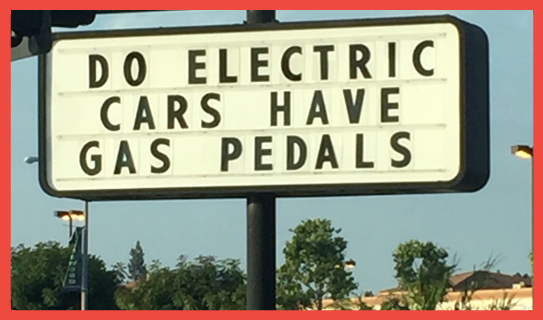
I see this sign every time I drive to my gym (I leave it up to you to guess how often that is, but let’s say it’s not as frequent as it should be). A tire company put it up and it always makes me smile and think about how wonderful of an industry I am working in; being able to collaborate with innovators, playing a part in what’s next, shaping the future one brand at a time. That sign also shows how, as an invention, the electric car category had to re-invent everything, including the industry terminology. (Electric cars do not have gas pedals, they have accelerator pedals).
And this brings me to my point: If you are starting an inventive, innovative – or may I even use the term – disruptive brand, does your visual (or verbal) identifier indicate that? Is your brand identity in line with your product or service, or is it falling right smack into the ‘Silicon Valley Crap Trap?’ What is that you ask?
Let me visualize it for you:
![]()
Now that is the Silicon Valley Crap Trap (pictured a few years back, a more modern take can be seen here).
All of these companies were innovative tech startups, all were real disruptors (yes, even vimeo). They worked hard to kick the status quo in its behind with their products, yet why did they all look the same, in that same crappy and uninspired way? Lack of money? Lack of inspiration? Lack of design skills? None make a good excuse given these are driven and highly talented entrepreneurs with a big vision. The answer of course is their determined focus on product (and product alone) that leaves all else, including the first thing people will see – the branding, crumbling in the dust.
Think about it (and this is where you come in): You are here to change things, to propel things forward. Shouldn’t your brand identity ache to stand out from the ‘competitors’, the landscape, the segment – just the way your product/service does? You can tell most of below brands from the unique shapes mixed with the specific color of their logos alone. Now picture a blue script font and ask: Which early tech startup comes to mind? Tough call…maybe Skype? Twitter? Any of the pictured above?
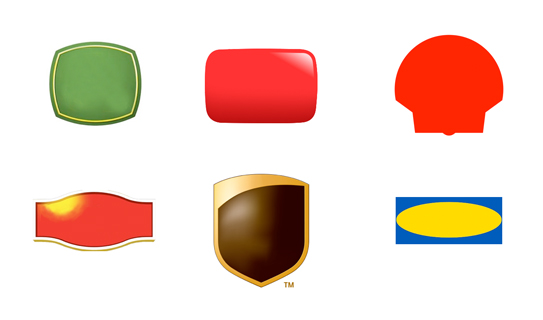
(You got it, but just to confirm, pictured from top left: John Deere, YouTube, Shell, Lipton, UPS, IKEA)
So let’s recap:
Your disruptive FinTech brand can not have a bank logo. Makes sense.
Your unique coffee bean brand can not have a hip coffee shop logo. Yup, we’d agree.
Your innovative…and on it goes – you get the point: Don’t fall into the trap and have your logo do what everyone else in your industry is doing unless your brand is doing exactly what everyone else in your industry is doing, in which case I digress and leave you to climb a mountain and ponder the bigger issues.
Vision Critical: How to Cut Through The Brand Statement Clutter
Creating a positioning statement, a mission statement and a vision statement. Not to mention the mighty elevator pitch. It can drive Founders of new, and CMO’s of not so new ventures completely insane.
Rightfully so.
How much do they really differ? Which comes first? How do I translate one into another? Does anyone really care, or will I only create statement confusion, brand angst or promise dizziness amongst my team and my audience?
Start with these 2 steps in order to not go insane while you craft what really should be a wonderful A-HA experience for yourself and your team:
1. Get The One And Only Statement You Will Never Publish Right
You won’t use your positioning statement ever; in public that is.
Yet, this is the very sentence that will drive everything about your brand. The positioning statement is your brand in a one sentence statement. It’s not a quick read (most often it’s a mouthful) and it is not meant to be outward-facing. This one is for your eyes only. It is crafted so you can base any and all other brand statements on it. It is everything about your brand: The who, the how, the what and the all-important why. A business plan disguised in a brand coat.
2. Fuse Mission And Vision Statements Into One – The One And Only You Will Publish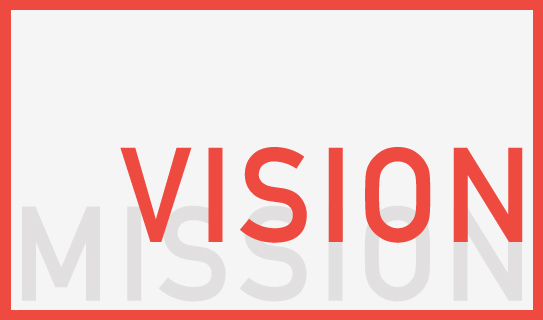
Once you have the positioning statement noted, translate it into a vision/mission statement combo. Yes, in my eyes they can be one and the same; it’s all you need.
When you think about the mission you are on, it can, and should translate into the big vision, or the ‘true north‘ you foresee for your brand. Make it easy for people and create one powerfully inspiring statement that is built on the ‘why’ – anything happening after the ‘because’ from within aforementioned positioning statement.
Taking the Alzheimer’s Association as an example, albeit a bit wordy. Currently we see two separate statements on their web site:
Using my proposed approach, these could be simply morphed into one powerful brand statement:
“[MISSION] We are on a mission to eliminate Alzheimer’s disease through the advancement of research; to provide and enhance care and support for all affected; and to reduce the risk of dementia through the promotion of brain health [VISION] in order to ultimately live in a world without Alzheimer’s disease.“
The mission is what you are currently setting out to achieve (and often are already achieving). The vision is the big, lofty goal. One should lead to another; naturally. By doing so it does not lead to statement confusion, instead you tell the story in a chronological order; a logical order, really.
- Positioning = the brand foundation
- Mission/Vision = showcased publicly, the ‘brand statement’
- Elevator pitch = in conversation only
There you have it, your public brand statement, plus two helpers.
Now go spend the extra time putting the words into action. Your team will thank you.
Coin It: 3 Reasons Why Your Venture Needs To Develop Nomenclature
Getting a venture off the ground is tough. Competing against similar startups and established players along the way is even tougher.
One tool to add to your ‘brand insurance box’ (you know, the things you do that make your venture a strong brand) is also one of the simplest and most valuable branding efforts you can undertake: creating a term you can own.
Below I outline 3 reasons why owning your language will leave a quantifiable mark on your brand:
1. It Differentiates You From Your Competitors
Don’t come up with a term for branding’s sake, rather evolve it naturally. The last thing you want to do is to confuse your customer with strange lingo, instead you want to inform and educate. Think of industry terms that are being used within your segment by your customers – are they all clearly saying what you’d want them to say, or are some misguiding, perhaps even outdated based on the solution your venture offers? Some you might flat-out hate or poke fun at regularly for good reason.
I, for instance, hated the term ‘brand collateral’ to describe the pieces a brand uses to communicate its brand values, visuals and language to clients, consumers and prospects. During the process of writing the book ‘How to Launch a Brand,’ I demanded a better term for the visual and verbal brand communication pieces and I coined the term ‘Brand Atmospheres.’ To me it made for a much stronger and all-encompassing description that felt logical rather than confusing. I trademarked the term, linked it to our web site, named one of four chapters in the book after it and soon prospects started talking about how ‘they needed to revisit their Brand Atmospheres.’ Long gone were brand collateral conversations.

It’s not on the scale of someone asking for a Kleenex or making a Xerox of a document, but within my niche it made me realize just how much of a differentiator it became to have marked a term that is being used in conversations by prospect clients. It strengthens the brand perception and creates an immediate relationship between prospect and provider.
2. It Establishes Immediate Trust
Maybe you have a process, a specific way of doing things? Will you call it ‘Our unique process’ or will you actually give it a unique name that describes your thinking in a better way? I named our one day brand strategy workshop for startups ‘Resonaid,’ to further describe the function of the workshop: It serves as an aid to make your brand resonate with its customer from the get-go. It turned our process into a product that is instantly tangible as well as ownable.
The unique thing you do, whatever it may be, give it a unique name. If it’s unique it deserves it; perhaps even demands it.
People trust something you truly own (up to). It not only adds importance, it also makes it unique to you, which relates to your offering as being substantial, or substantially better than the one of your competitors. Most founders start at the brand name and end at the product name missing out on all the terms in between, which establish trust along the way of the decision making process.
3. It Creates Intrigue And Belonging
Creating a lingo is like your own secret language, which won’t remain a mystery for long. It’s like writing with invisible ink, only that everyone will ask you to see it. Everyone will want to be ‘in the know’ and once they are, they will be darn proud of it. They have a sense of belonging. They don’t grab donuts at Strange Donuts in St. Louis, no, they grab dones. They call me and ask for a Resonaid workshop, not about the ‘brand creation’ workshop.
Adding intrigue to a brand is every marketers goal. Usually that involves big campaigns on even bigger budgets. By adding unique nomenclature to your branding efforts, you hit that intrigue mark on a much tighter budget.
While other startups try to become ‘the Uber of their industry’ why don’t you take the direction of becoming ‘the Kleenex of your industry’ instead? They will call you by your name. Promised.


